Nine places on campus to escape the heat
Tyler Robertson, El Inde Arizona
On Sunday, April 30, Tucson registered its first 100-degree day of 2023, signaling that the Sonoran heat of spring and summer is upon us.
To most people around the United States, a triple digit temperature is usually rare, with it happening a few times a year.
In Tucson, temperatures over 100 can linger for months at a time, restricting the ability to spend as much time outside as you can in the fall, winter or early spring.
It can also take away from the ability of students at the University of Arizona to fully enjoy their campus.
The heat can be dangerous, therefore most people look to stay in their shaded and air-conditioned households. However, if you are interested in visiting the University of Arizona in the summer – – or you happen to be taking summer classes- there are several places you can visit to not only have fun, but stay shielded from that great Southern Arizona heat.
Jim Click Hall of Champions
The Jim Click Hall of Champions is located at the north end of Mckale Memorial Center at 1766 E. University Blvd., on the southeast side of the University of Arizona campus.
It opened on Sept. 14, 2003, as part of the previously completed Eddie Lynch Athletics Pavillion. This heritage-museum, as they describe it, is a perfect place to visit if you are a fan of sports or the University of Arizona’s athletic success. Not only is it free to enter, but it contains plenty of space to spend some hours of your day looking around.

The Hall of Champions, as it is often shortened to, contains rotating exhibits of Wildcat olympians, professional players, spirit squad memorabilia and more from Arizona Athletics. Photos by Tyler Robertson, El Inde Arizona
The goal of the hall is to celebrate and display the rich history of Arizona Athletics, its traditions/heritage and its Sports Hall of Fame.
At almost 10,000 square feet, according to their estimates, the hall contains all of Arizona’s championship trophies, an exhibit breaking down Arizona alumni who have played professionally, a wall of every Arizona alumni to ever appear on the cover of Sports Illustrated and more.
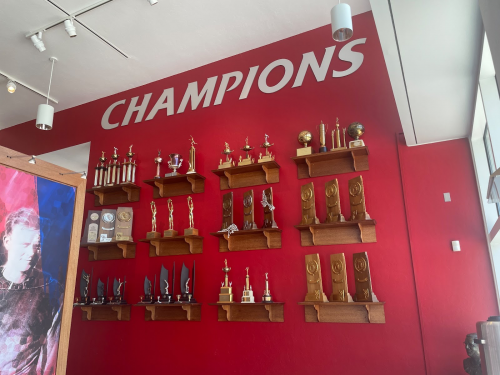
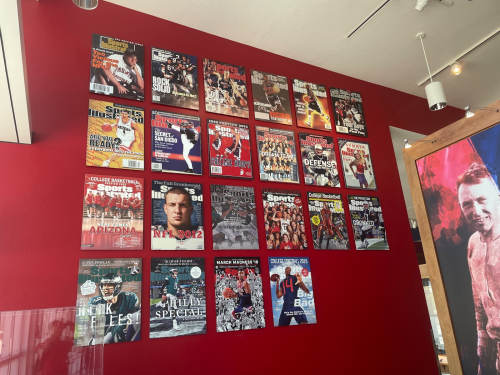
There is also a second level used for events, highlighted by its basketball-like hardwood flooring and old Arizona cactus logo in the center of the floor.
One of the most interesting things in the building is the “Wildcats v. Wildcats” exhibit. This exhibit, in conjunction with the Arizona Sonora Desert Museum, compares and contrasts Arizona athletes, and their fans noise level, directly to that of a bobcat.
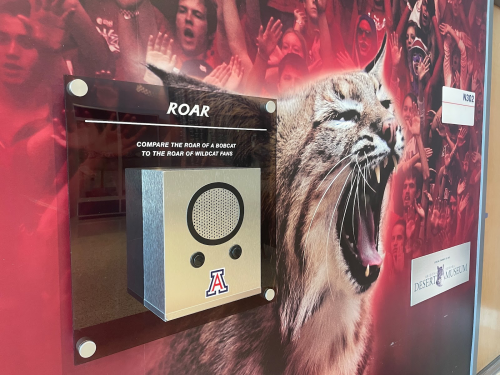
The Hall of Champions is open to the public from 9 a.m. to 4 p.m. weekdays and admission is free.
Information: arizonawildcats.com
Student Success District
On April 13, 2022, the University of Arizona and its leaders held a grand opening for its new, nine-acre and four building Student Success District.
The district, sat in the heart of the campus, is comprised of the University of Arizona’s Main Library, Bear Down Building (formerly known as the Bear Down Gymnasium), Bartlett Academic Success Center, and Albert B. Weaver Science-Engineering Library.
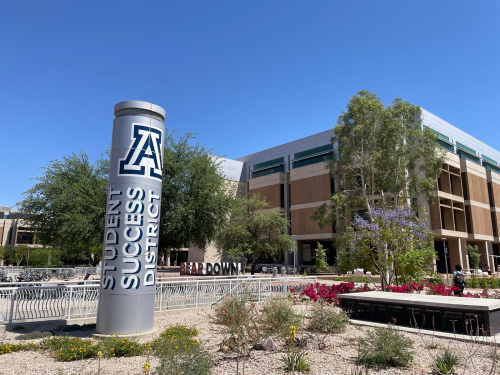
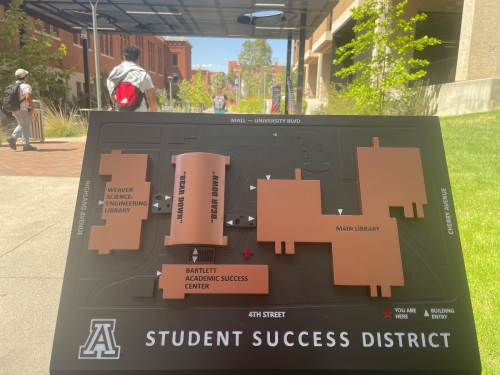
The original idea for the district was conceived in 2015, but construction didn’t begin until 2019 when it started at the Main Library.
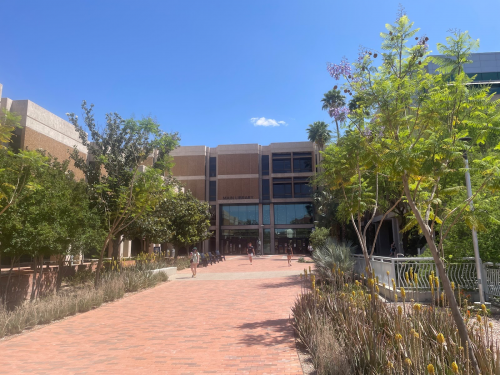
The library, by far the biggest building in the district, received multiple renovations, with arguably the biggest being the implementation of CATalyst Studios.
CATalyst Studios was a set of three work areas on the second floor specifically dedicated to expanding the library’s technological opportunities. The studios gave students the ability to use a laser cutter, reserve virtual reality equipment, 3-D print items and more. The space later added a media recording studio and data studio for reservation.
The library received some other renovations as well, particularly on the bottom level.
From a new staircase with sitting space, to a new technology toolshed and upgraded study rooms, this area received an overall makeover for its efficiency and student success.
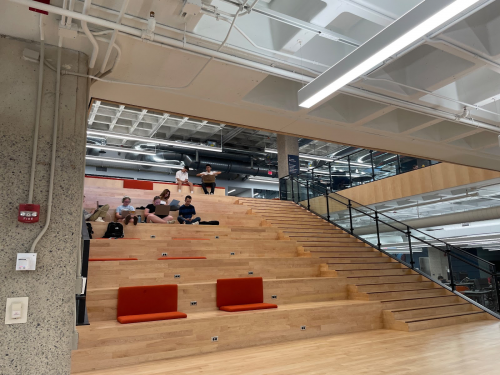
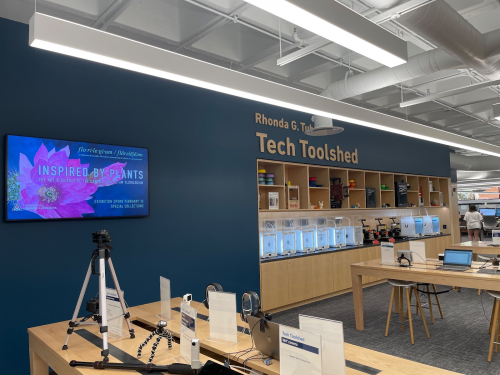
The two buildings closest in proximity to the library, Bear Down Building and the Bartlett Academic Success Center, offer more opportunities for students to expand on their academic growth.
In Bear Down Building, formerly the university’s first gymnasium, students have the opportunity to reserve more study rooms that have had recent renovation, increase mental and physical health at the fitness center on the first floor, get a snack at the Red & Blue Market or take a seat on one of their couches downstairs.
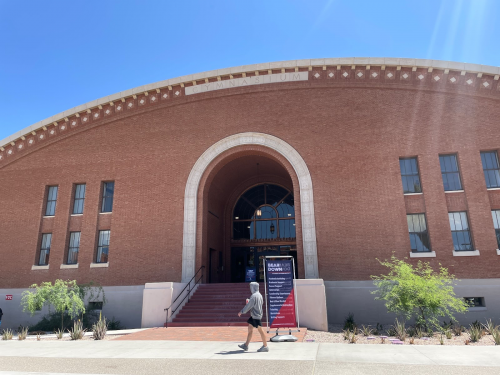
With the Bartlett Academic Success Center, students can get academic advising, tutoring opportunities and more. The two are the hub for student academic resources, but are also nice places to sit down to enjoy some shade and air-conditioning.
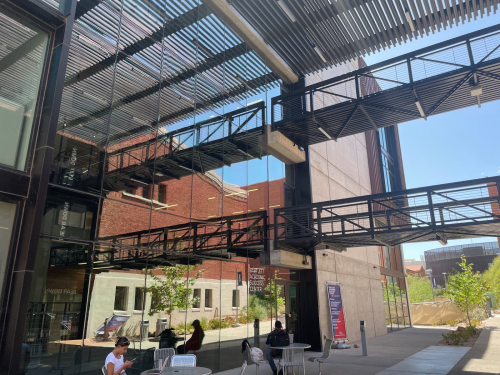
The Albert B. Weaver Science-Engineering Library is what you would expect from the main library with a narrower focus on science and engineering students. They have study rooms available and materials for people to check out, but nothing as noteworthy as the main library’s addition of CATalyst studios.
Still, this remains a viable option for students if they are looking for a place to avoid that middle of the year heat.
The Main Library at 1510 E University has summer hours (effective May 15) from 7 a.m. to 7 p.m. Mondays-Thursdays from 7 a.m. – 7 p.m., 7 a.m. – 6 p.m. Fridays, 11 a.m. to 6 p.m. Saturdays and 1 to 6 p.m. Sundays. Admission is free. For more information, visit lib.arizona.edu.
Bear Down Building, 1428 E University Blvd., has summer hours from
Summer Hours (Effective May 15): Monday-Friday from 7:45 a.m. – 10 p.m. weekdays; free. Details at successdistrict.arizona.edu.
Bartlett Academic Success Center (BASC), 1435 E Fourth St., is open from 8 a.m. to 9 p.m. Mondays-Thursdays and until 5 p.m. Fridays; free. Details at successdistrict.arizona.edu. Albert B. Weaver Science-Engineering Library, 744 N Highland Ave., is open from 7 a.m.-7 p.m. Mondays-Thursdays, until 6 p.m. Fridays, 11 a.m.-6 p.m. Saturdays and from 1-6 p.m. Sundays; free. Details at lib.arizona.edu.
Eighth Floor of Wyant College of Optical Sciences Meinel Building
For most the thought of going to an optical sciences building to try and cool off sounds rather dull, but for UA students who are familiar with the study space on the eighth floor, this is often referred to as one of the best places on campus.
Sitting just across Cherry Avenue from the northeast part of the Main Library, students can find the Meinel Building, home to the UA James C. Wyant College of Optical Sciences.
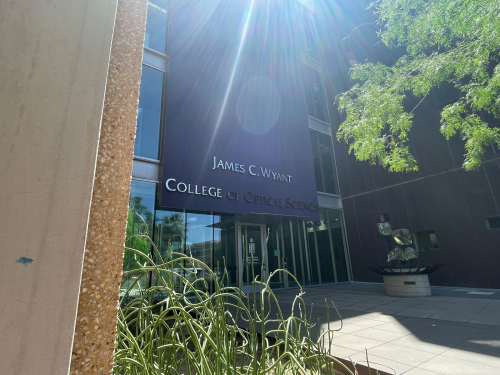
If you look north, out the glass, you can see atop almost all buildings in front of you. Additionally, you can achieve a great view of the region’s Santa Catalina Mountains.
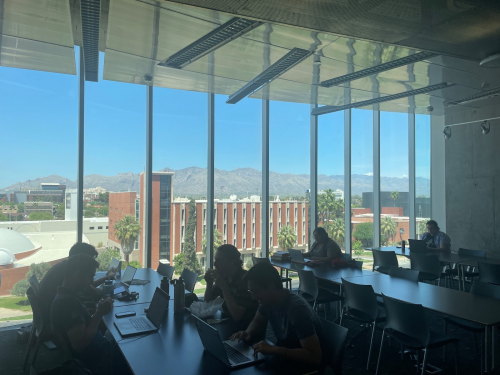
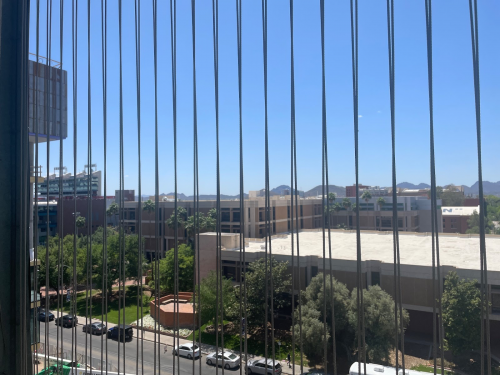
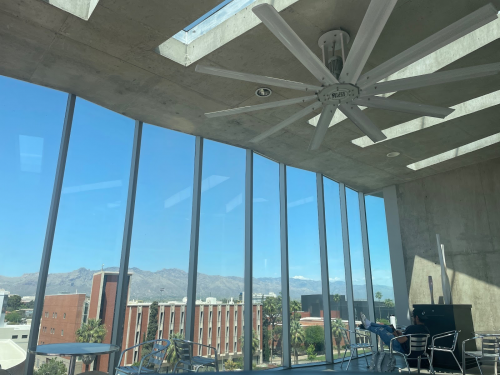
Wyant College of Optical Sciences Meinel Building is at 1630 E University Blvd. and it’s open to 5 p.m. weekdays; free. Details at optics.arizona.edu.
If you take a trip directly north from the Meinel Building and cross the University of Arizona Mall you will find yourself at the Flandrau Science Center and Planetarium. It is here that you –can explore two floors of scientific exhibits – “Wide World of Bugs, Sharks: Magnificent & Misunderstood,” “Solar System Revealed,” “HiRise: Eye in the Martin Sky,” “Destination: Mars,” “Puzzling the Past” and “Asteroid Cave” –- as well as watch a laser music show or scientific production in the planetarium.
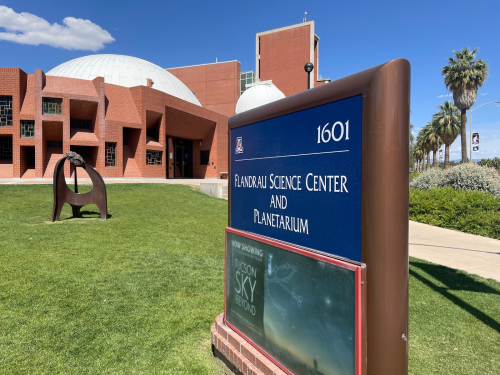
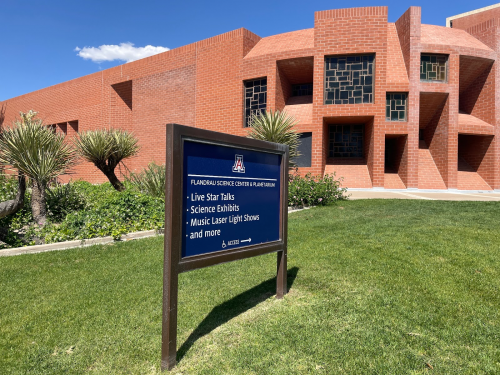
These music shows are only available on Saturdays and usually sell out fast so purchasing an advance ticket is recommended.
What makes the Flandrau Science Center and Planetarium different from other places on campus is that you will need to pay to explore its most interesting elements. They are kind enough to let you hang around the gift shop or sit up front, but admission must be paid before continuing on to the exhibits or seeing a show.
Prices for each vary based on age, but there are also discounted rates offered to military, college students and others. If it interests you to stay out of the sun, but also be entertained while you do so, the Flandrau Science Center and Planetarium is definitely an option.
Flandrau Science Center and Planetarium, 1601 E University Blvd., is open from 10 a.m.-5 p.m. Tuesdays-Sundays; flandrau.org.
Arizona State Museum
According to its website, the Arizona State Museum was established in 1893 and is the “oldest and largest anthropological research facility in the U.S. Southwest, with expansive collections that are exceptional resources for the study, teaching and appreciation of the region’s 13,000-year human history.”
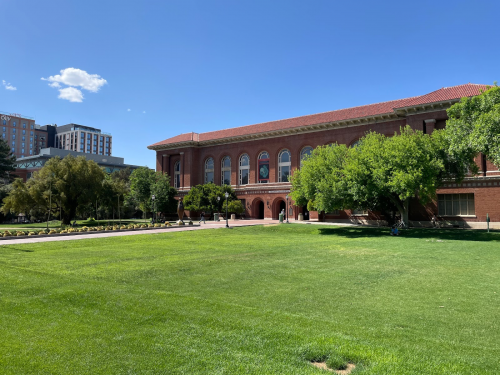
While the Hall of Champions remains focused on preserving and celebrating Arizona Athletics, this museum is much more focused on the history of the Southwest and its indigenous peoples. Currently the museum is operating with four exhibits, two permanent and two for a limited time.
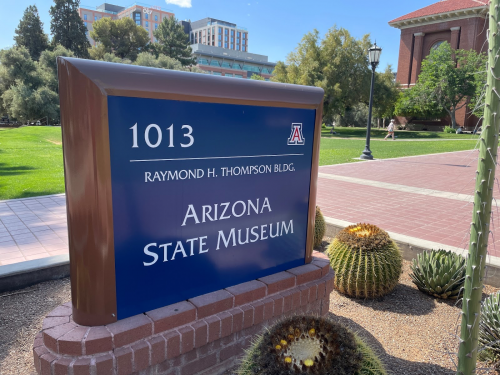
If you are a student on campus and looking for a place to take a break and learn something new about the region in which you go to school, the Arizona State Museum can satisfy both of those wants. They also have a free to use library for studying. Arizona State Museum, 1013 E University Blvd., is open from 10 a.m.-4 p.m. Tuesdays-Saturdays. Details at statemuseum.arizona.edu.
John P. Schaefer Center for Creative Photography
The John P. Schaefer Center for Creative Photography, or the CCP, first opened in 1975. The center’s website states that since then, the collection has grown to include 270 archival collections including from some of the most recognizable names in 20th century North American photography including one of its founders, Ansel Adams.
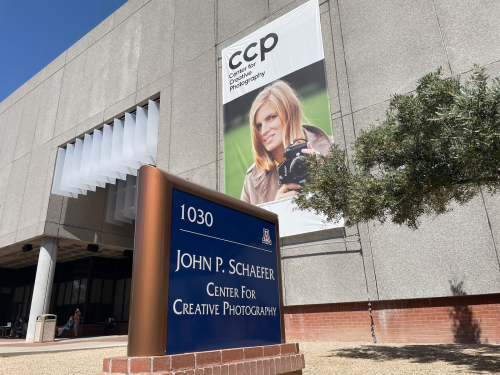
Currently at the center, there are more than 110,000 individual photographs by over 2,200 photographers. In addition to being a gallery, the CCP also is a museum/library, preserving the history of photography and everything that has led up to its inception.
Today, at the center, you can request to see any of this information, take a class in their auditorium or see the latest exhibit. Now through Aug. 5, see“The Linda McCartney Retrospective,” which includes photos she made from her years of living in Tucson.
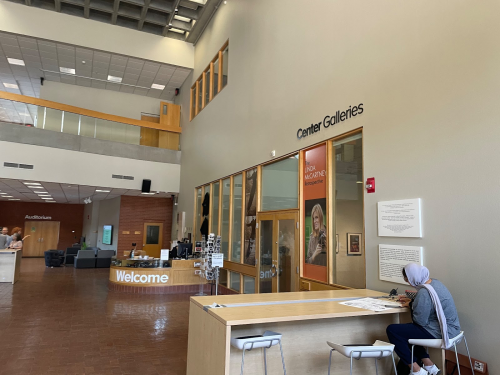
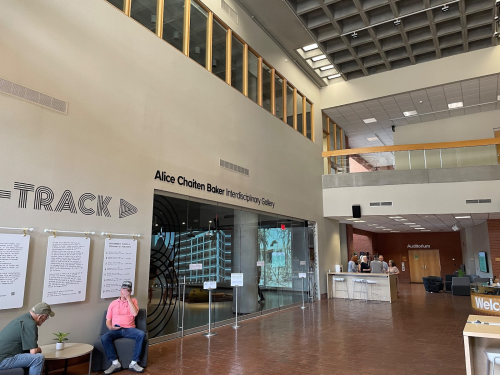
The CCP is at 1030 N Olive Road and is open from 9 a.m -4:30 p.m. Mondays-Saturdays. Admission is free; ccp.arizona.edu.
Environment and Natural Resources 2 Building
The final indoors area that you should check out during those warmer months is the Environment and Natural Resources 2 Building, commonly referred to as ENR2.
The building, completed in 2015, is unlike any other on campus as its functions as a commitment to sustainability and research.
Not only does the building have rooftop gardens to promote oxygen production and reduce energy costs, but it also has a unique design that allows for sunlight in the middle, but shade on its edges.
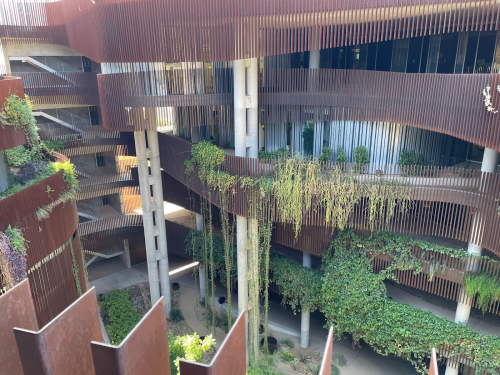
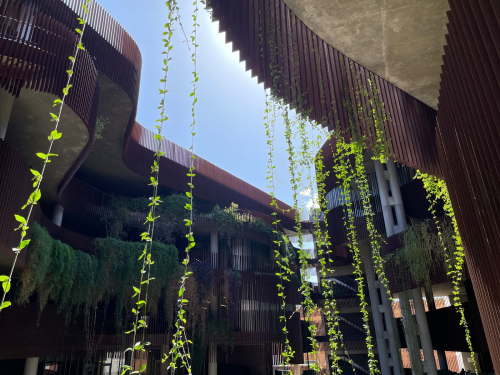
The building is sandwiched between East Sixth and East Lowell streets on campus and is definitely in the conversation as one of the most unique looking buildings that students can visit. On site there are classrooms, auditoriums, offices, gathering spaces, study spots and a café.
However, the courtyard remains the center focus for the building, is often populated with people and has the most noticeable vegetation.

ENR2, 1064 E. Lowell St., is open 8 a.m.-5 p.m. weekdays. Details at air.arizona.edu.
2nd Floor Old Main Rocking Chairs
The first outdoor option for cooling off on this list is a relatively new one and it is located at Old Main, the university’s oldest building.

In November of 2019, surrounding the university’s homecoming week, new rocking chairs were installed on the second deck exterior of the building. The chairs, donated by the Governing Board and friends of the University of Arizona Alumni Association, sit atop a wraparound porch providing views of the Old Main Fountain, University of Arizona Mall and more.

What makes these chairs a good spot to cool off is the shade provided. Because there are chairs available on each side of the building there is always the option to be out of the sun. Obviously there is no air conditioning, but it should be noted there are no ceiling fans either.
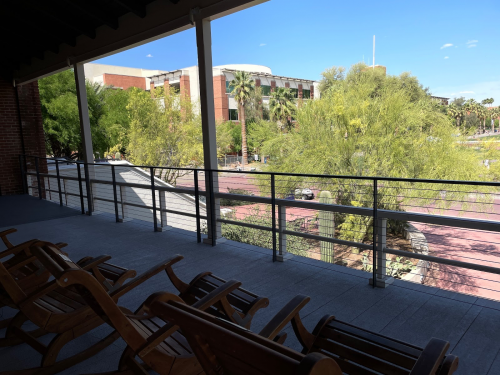
Old Main at 1200 E. University is open 24-7 pretty much, right across from the UA Mall. Learn more at alumni.arizona.edu.
“Citrus Tree Walkway”
Our final suggestion for a place to cool off from that Tucson heat is not an official location at all. In fact, it is likely most students don’t even know where it is. For our purposes, we will call it the “Citrus Tree Walkway.”
The Citrus Tree Walkway is located in between the university’s Gila and Maricopa dormitories. It is a cement walkway covered by orange trees on both sides. To its east side are a couple of tables, shaded primarily by the trees and the dorm buildings, with sun hitting them occasionally.
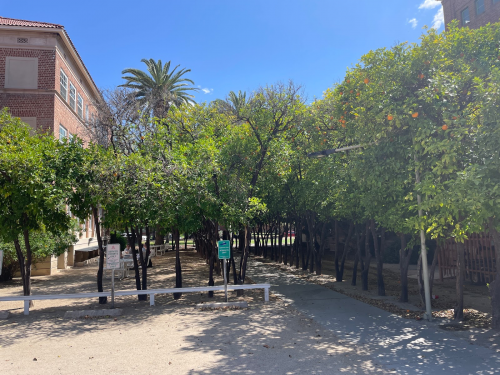
This area offers a unique experience to try if you are around.. Plus, if in season, you can take an orange right off of the tree and have a snack.
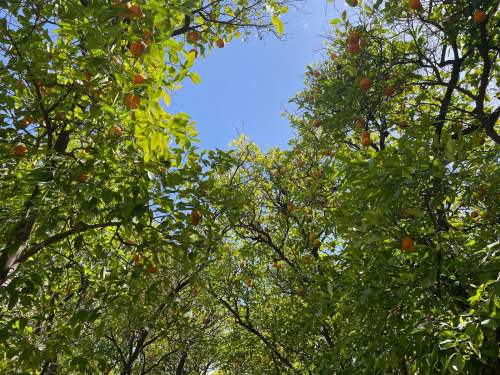
El Inde Arizona is a news service of the University of Arizona School of Journalism.
